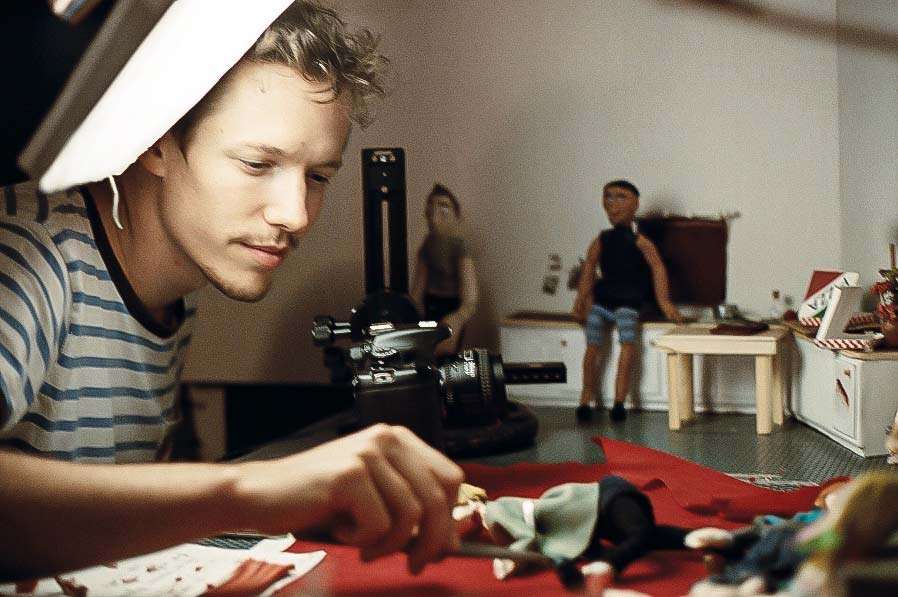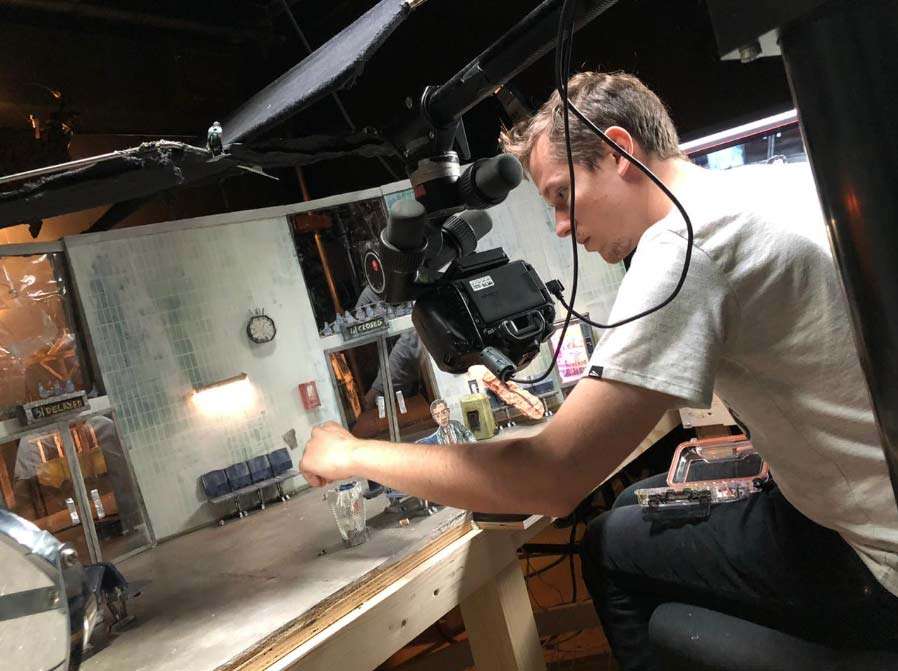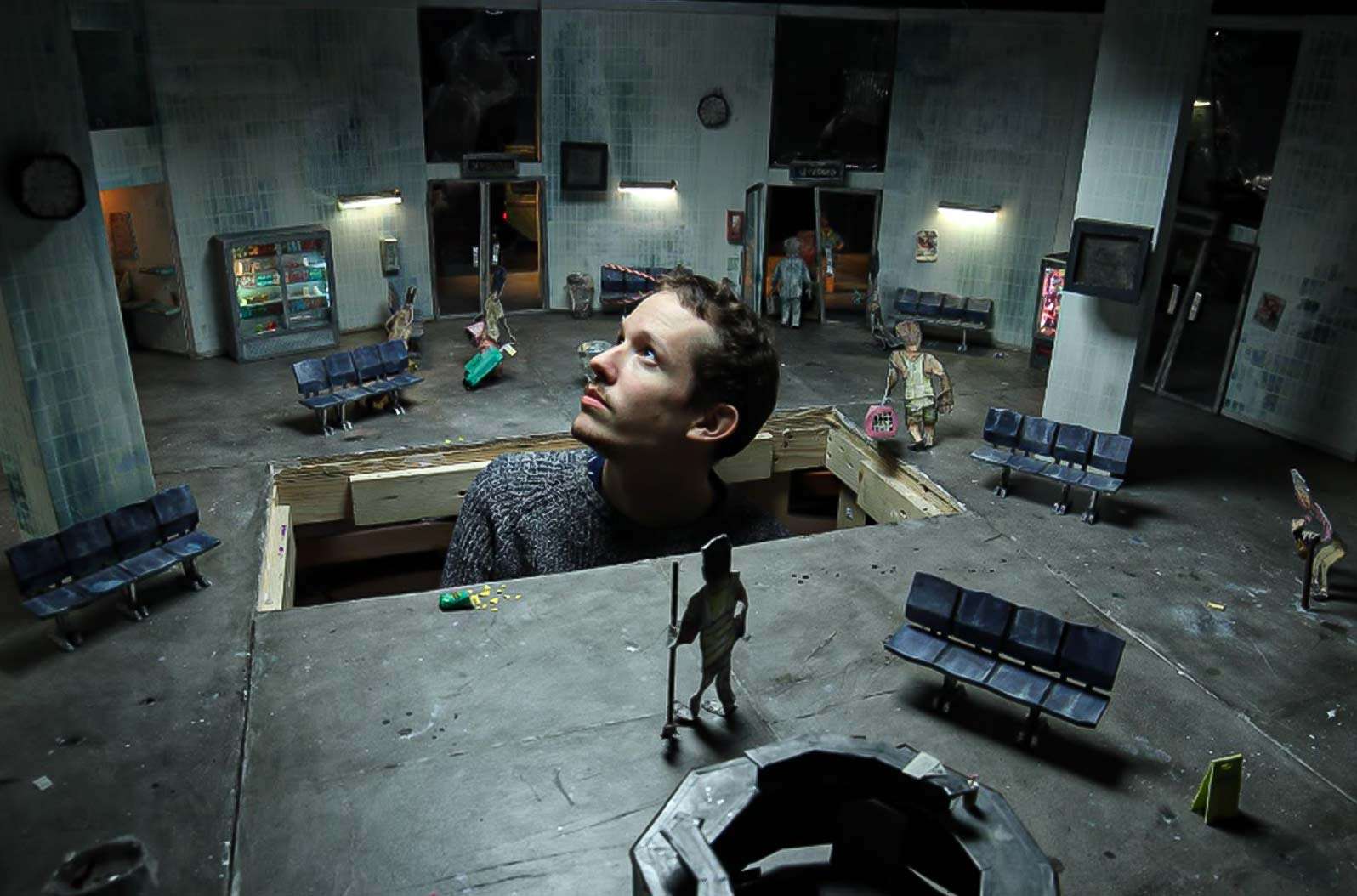Meet Our Director: Antonin Niclass
Antonin is a swiss-french director and animator who graduated from the prestigious National Film and Television School in London with his film ‘Do Not Feed The Pigeons’ winning numerous international awards including a BAFTA for best short animation. Antonin Niclass handcrafts tactile stop-motion pieces which combine shabby chic animation craft with a tender sense of humour that leads audiences to experience known places with a new perspective. He uses animation to depict small things of everyday life, bringing both rawness and poetry to it. He likes to show human connections or relationships often without using any words at all. Whether it’s bittersweet taste or emotional storytelling, his films incorporate clever tricks and techniques to capture the audience.
What inspired you to get into animation, and how did you get started in the industry?
I remember as a kid recording stories with the Lego Steven Spielberg MovieMaker set my neighbour had just received for Christmas. We used to create stories with a mix of legos and dragon ball action figures.… Being kind of a shy kid, I discovered a very playful way to express oneself. But I also discovered the power of bringing an audience together and creating common ground. Much later on, during my filmmaking studies in Belgium (which include fiction, tv doc and radio… but no animation), I was shooting stop motion with my housemates in the basement of our Brussels flat. We were making very short skits in different styles and it allowed me to build a portfolio to join the National Film and Television School. I realised then how much I enjoyed collaborating with more talented people who would all focus on creating the best piece possible, and my graduation film opened some doors for my career.


Can you speak to any particular challenges or opportunities that arise when working with animation as opposed to other media, such as live-action film?
I like the fact that you can make everything from scratch. The possibilities are endless and you can play with any material you like whether it is sand, plasticine or finger nails (try to avoid that last one). Everything you build already has a feel to it: even the most mundane object in the film can induce a strong visual style and set a mood just by the way it is crafted. I also personally enjoy the tactility and sensations of materials because I get quite anxious when I spend the whole day on a computer. It feels quite surreal to really be on set with our miniature actors, with the same surroundings. You really impersonate a character when you start animating and you will often see animators in their studio doing weird faces or movement while moving a puppet… The most challenging thing in animation is the time it takes. This makes us prepare the film so much that you can basically watch it before it is actually shot (the animatic is like an animated storyboard). I believe this is actually a strength of animation.
How do you approach storytelling in your work, and what are some of the key elements that you think make a story successful?
Drama and laughs. Even the saddest story makes you smile at some point. I like to add a tiny laughable detail about a character to allow the audience to relate. Once the viewers are hooked, you can bring them to a new place they did not expect!
How do you balance the desire to create something new and innovative with the need to appeal to a wider audience?
I believe that emotions and characters are the key to make any innovative technique, visual or form relatable to the audience. There can be new ways of bringing these emotions to life but there will always be characters in stories whether it’s a giraffe, a lamp, or even a single dot. Thank god for us filmmakers that human kind loves stories and tends to empathise with anything they encounter (I recently felt sad for a pebble I had to leave behind).

How do you see the animation industry evolving in the next 5-10 years, and how do you hope to contribute to that evolution with your own work?
I’m hoping to see animation considered as a film technique and not a genre for ch ildren. In fact, animation is film, but you add a bit of Fine Arts to it. The limit of the universes you’re creating are endless limitless and the medium tends to make stories even more universal. It has a very playful side in it that makes even the most difficult or traumatic stories compelling and bearable.
What experiences or events in your life have had the greatest influence on your artistic vision and approach to storytelling?
I think being an only child who grew up in Switzerland, I had to learn how to live with boredom (laughs). I would find a lot of distraction in observing things around me and I believe that is what made me pay attention to details and people’s behaviours. I was looking for stories all the time.

What advice would you give to someone who is just starting out as an animation director, based on your own experiences and lessons learned?
I think the advice from most filmmakers is often the same : get your phone out and make a film. But I find it even more true with stop motion as you can create your actors from bits and bobs. Set up a free stop motion app on your phone and just go with it. Be realistic, start by making a very short 30-60 seconds film and focus on your character : who is s/he and what is s/he going through?

